Breeding in Captivity
2023
Okinawa Churaumi Aquarium’s sea turtle research received a Koga Award, Japan’s highest award for rare species breeding.

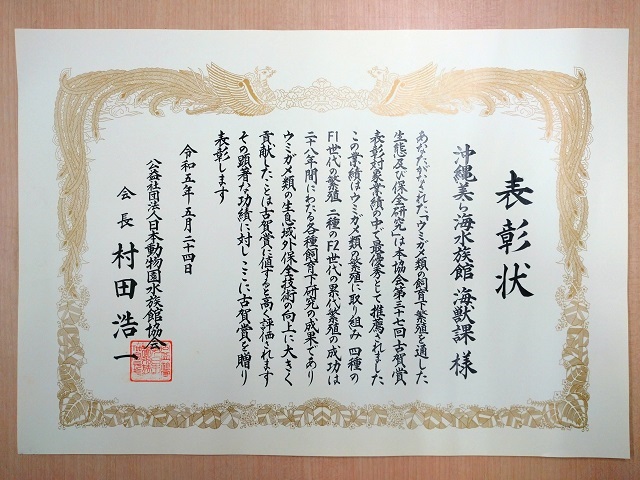
The Japanese Association of Zoos and Aquariums gave the 2023 Koga Award to Okinawa Churaumi Aquarium for its efforts breeding sea turtles. Our foundation previously received this award in 1987, 36 years ago.
【Award title】
Ecological and conservation research conducted through captive breeding in sea turtles.
【What is the Koga Award】
The Koga Award is given to aquariums and zoos for exceptional achievements in the breeding of rare animals. It is the most prestigious award in Japan, and is presented only after successful breeding of a rare species with global significance. Its name commemorates Dr. Tadamichi Koga, former director of the Ueno Zoological Gardens, who made a great contribution to the establishment of JAZA in 1986.
【Information on the award】
Okinawa Churaumi Aquarium has successfully bred sea turtles listed on the IUCN Red List and Appendix I of CITES, including a first generation of loggerhead turtles, green turtles, hawksbill turtles, and black turtles, and a second generation of loggerhead turtles and hawksbill turtles. This achievement is the result of 28 years of captive research with publications in 16 scientific journals (13 English, and 3 Japanese). The research was judged as worthy of the Koga Award for its significant contribution to the improvement of ex situ conservation techniques for sea turtles. On May 24, 2023, the Koga Award ceremony and lecture was made at the JAZA general meeting.
2021
See three species of baby turtles that hatched at the aquarium
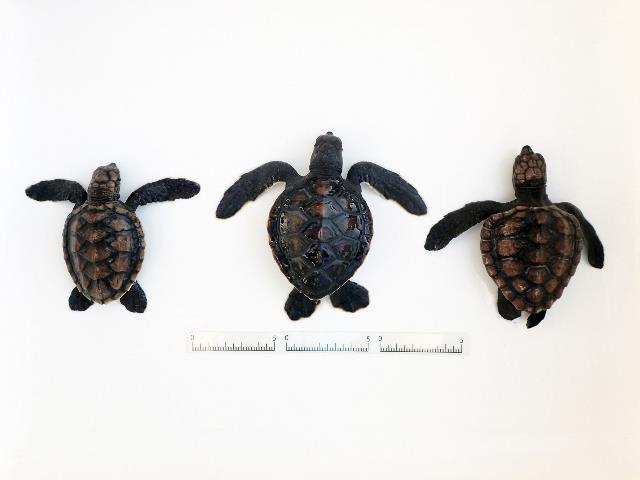
Three species of sea turtle successfully hatched at Okinawa Churaumi Aquarium: loggerhead sea turtles, green sea turtles and hawksbill sea turtles. We are happy to announce that you can now view the baby turtles.
A baby false killer whale is born!!
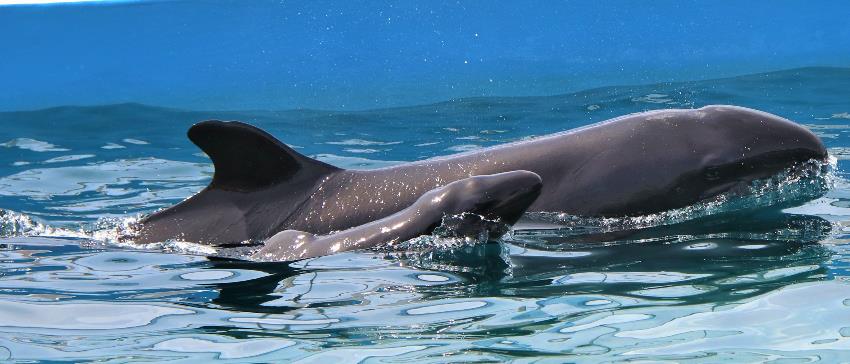
A healthy baby false killer whale was born at 6:57 AM on July 11th (Sun), at the Okinawa Churaumi Aquarium Dolphin Lagoon.
Controlling the time of coral spawning! Adjusting the release of coral gametes!
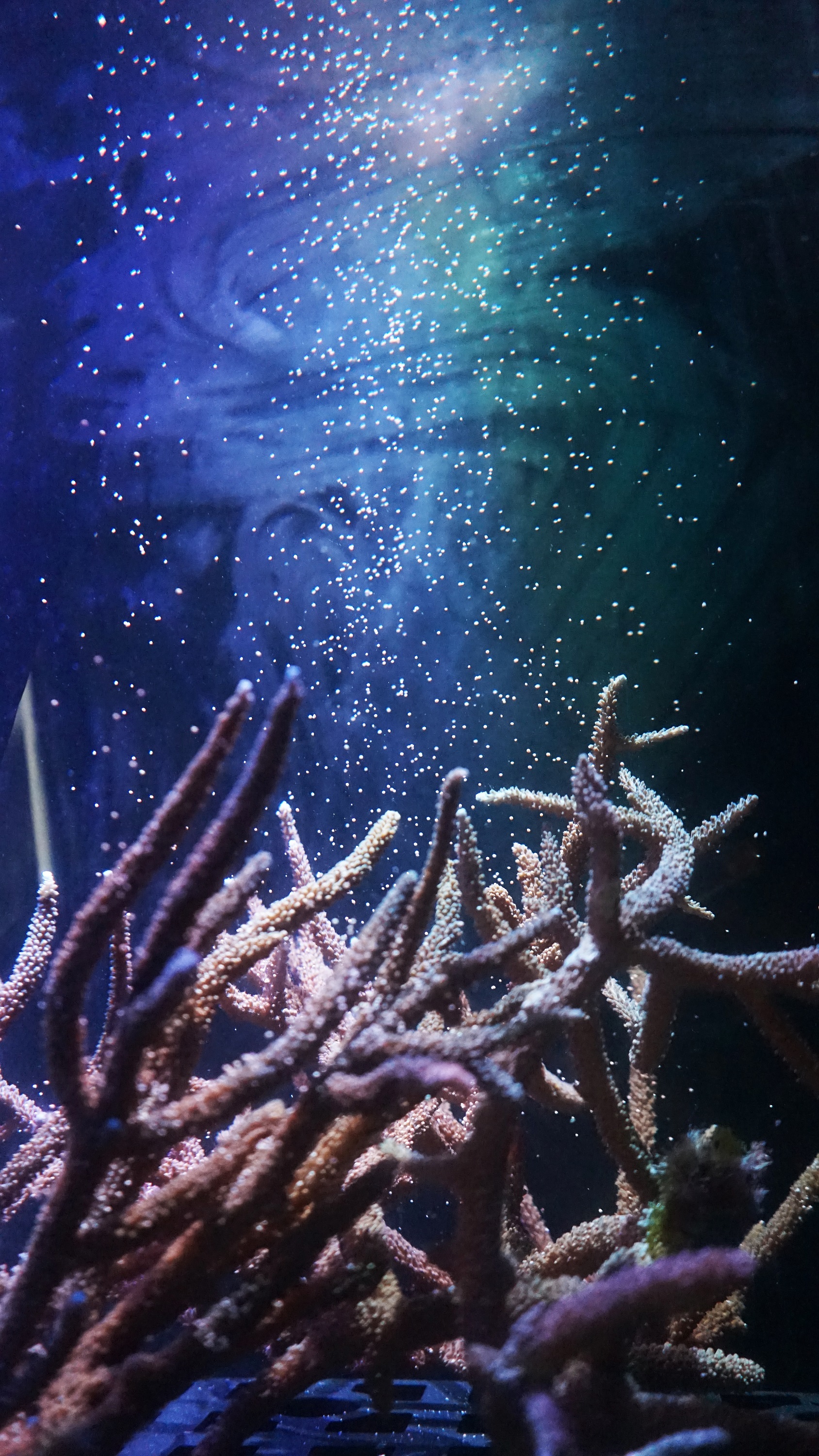
Coral spawning is the release of coral eggs and sperm.
At Okinawa Churaumi Aquarium the coral species Acropora microphthalma spawned from 13:55 to 14:25 on the 23rd and 24th of May, 2021. Acropora microphthalma is a species of staghorn coral, staghorn corals are commonly seen in the waters around Okinawa.
During spawning the coral releases pinkish capsules called “bundles” that are 1mm in diameter and contain the eggs and sperm.
These capsules burst on the surface of the ocean, and the eggs are fertilized.
Spawning in Okinawa occurs between May and June on a night around the spring tide.
The exact time of spawning will vary depending on the species.
Most staghorn corals spawn a few hours after sunset.
By gradually adjusting the lighting in the tanks, we were able to artificially create nighttime earlier and earlier.
This led to a successful “nighttime” spawning that was actually during the day.
By utilizing this technique at our facility, we are able to better understand the ecology of coral spawning.
We also hope visitors enjoy this opportunity to view coral spawning during the day!
A world’s first! Successful rearing and artificial birth through artificial uterus apparatus of a Mollers lantern shark, a luminescent deep-sea shark!
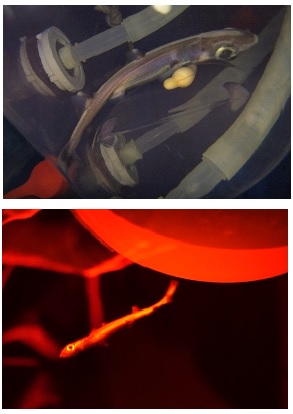
The Okinawa Churaumi Aquarium and Okinawa Churashima Foundation Research Center developed an artificial uterus apparatus for sharks. Using the apparatus, they successfully reared a fetus of a Mollers lantern shark, a luminescent deep-sea shark, and it was successfully artificially delivered.
2019
19 consecutive years of coral spawning since the opening of The Coral Sea tank! On May 31, broadcast spawning of corals was confirmed!

On May 31, broadcast spawning of corals took place in The Coral Sea tank of Okinawa Churaumi Aquarium!
The world’s first! Successful captive breeding of Indian mackerel
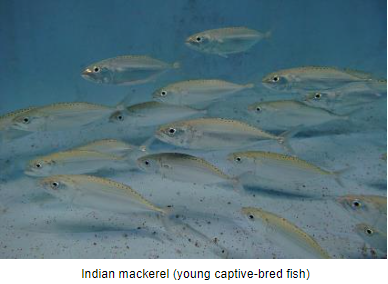
Okinawa Churaumi Aquarium is happy to announce the world’s first successful captive breeding of Indian mackerel, now on exhibit.
The only place in the world exhibiting four different species of baby sea turtles!
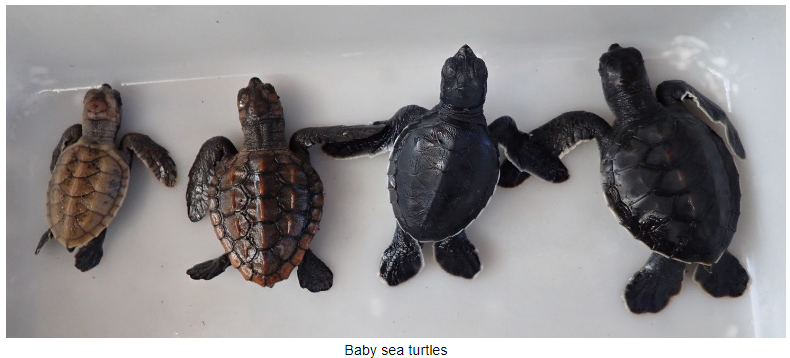
Since 2017, there has been successful hatching each year of four species of sea turtles at Okinawa Churaumi Aquarium. Hawksbill sea turtles, loggerhead sea turtles, Galapagos green turtles and the green sea turtles all successfully hatched at the aquarium. This is the only aquarium in the world where you can see four different species of baby sea turtles together.
18 consecutive years of coral spawning since the opening of The Coral Sea tank! On June 3rd, broadcast spawning of corals was confirmed!
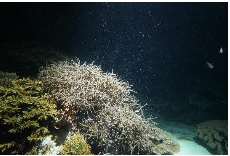
On June 3rd, in the first year of the Reiwa era, broadcast spawning of corals took place in The Coral Sea tank of Okinawa Churaumi Aquarium!
Born in the aquarium! Exhibiting two-year-old Japanese sawshark
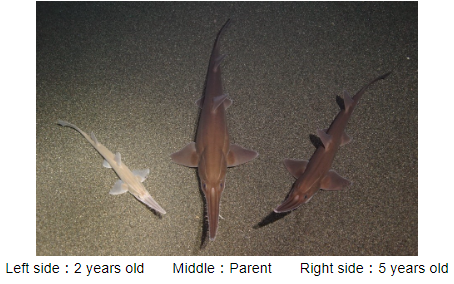
Okinawa Churaumi Aquarium is happy to announce the exhibition of three two-year-old Japanese sawsharks to live with the 5-year-old Japanese sawsharks that were previously born at Okinawa Churaumi Aquarium.
2018
A world’s first! Successful captive breeding, producing a third generation of hawksbill sea turtles!
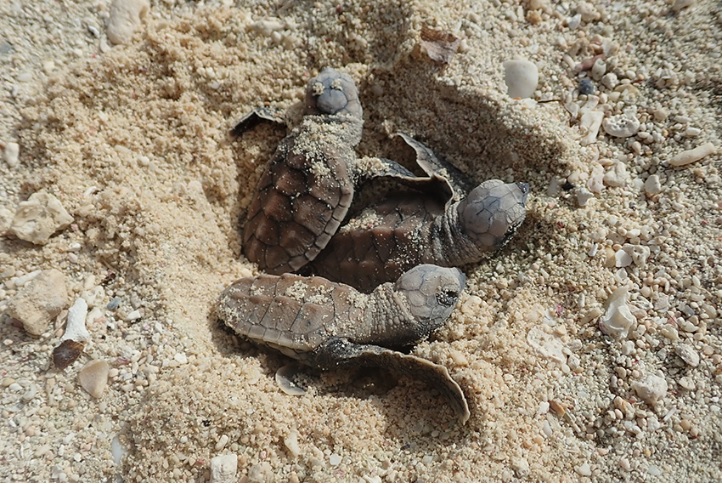
Okinawa Churaumi Aquarium has succeeded in being the world’s first aquarium to breed a third generation of hawksbill sea turtle.
Birth of a blotchy swell shark (Cephaloscyllium umbratile)
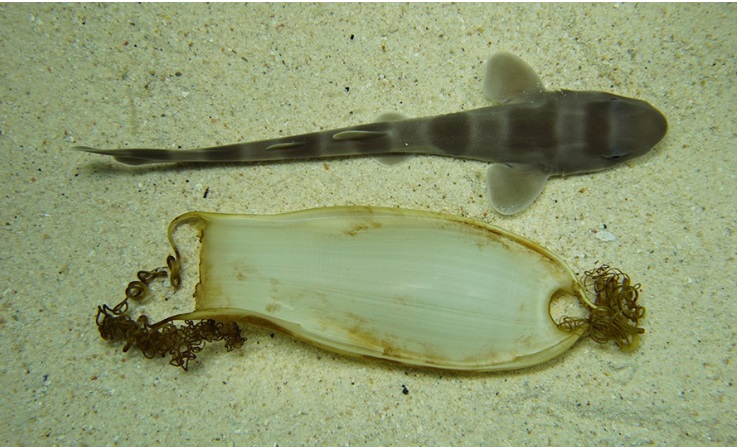
A blotchy swell shark has been born at the Okinawa Churaumi Aquarium.
Our first exhibit of the alien-like baby deep-sea pram bugs!!
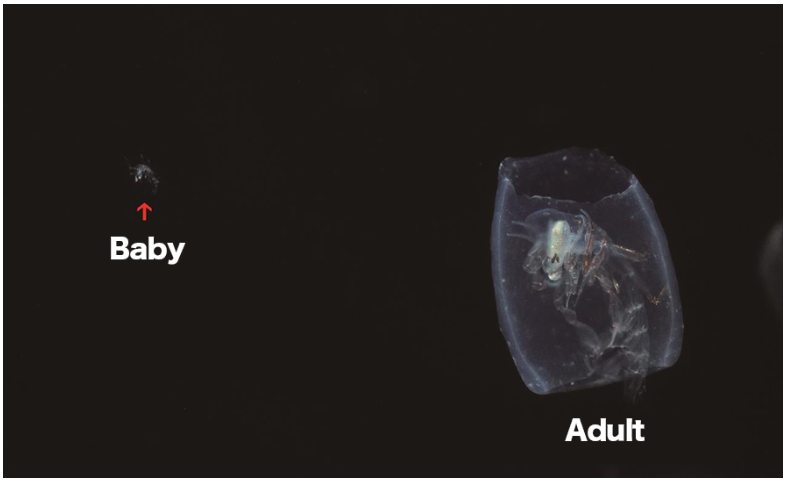
Baby deep-sea pram bugs were born in the Small Life in the Deep Sea exhibit at Churaumi Aquarium.
Churaumi Aquarium coral has spawned annually for 17 years! On June 12th 2018, we confirmed coral spawning had occurred in the Coral Sea tank!
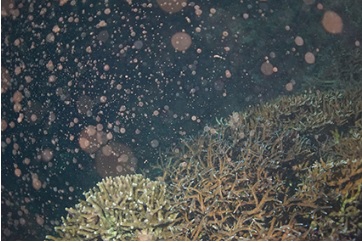
On June 12th, 2018 the release of coral eggs and coral sperm (coral spawning) occurred in the Coral Sea tank of Churaumi Aquarium.
Sandbar shark pups born at Okinawa Churaumi Aquarium!!

On May 24th 2018, sandbar shark pups were born in the Shark Research Lab at Okinawa Churaumi Aquarium. Nine pups (ranging from 60 to 70 cm in length) are now happily swimming in the “backyard” tank of the aquarium.
The Koga Award
The Koga Award was first established in 1986 and is named in memory of Dr. Tadamichi Koga, former director of the Japanese Association of Zoos and Aquariums, who contributed greatly to the protection and propagation of rare animals and whose generous donation formed the basis of the award fund.
The award is given to those who have notably contributed to the improvemment of breeding know-how in zoos and aquariums by demonstrating excellence in any of the following areas.
- Breeding of a globally rare species and one that is difficult to breed in captivity
- Successful breeding over multiple generations
- Breeding achieved as a result of creative, unique and groundbreaking efforts
In the very first award ceremony (1987), Okinawa Churaumi Aquarium received an award for successfully breeding two generations of whitetip reef shark in captivity.

